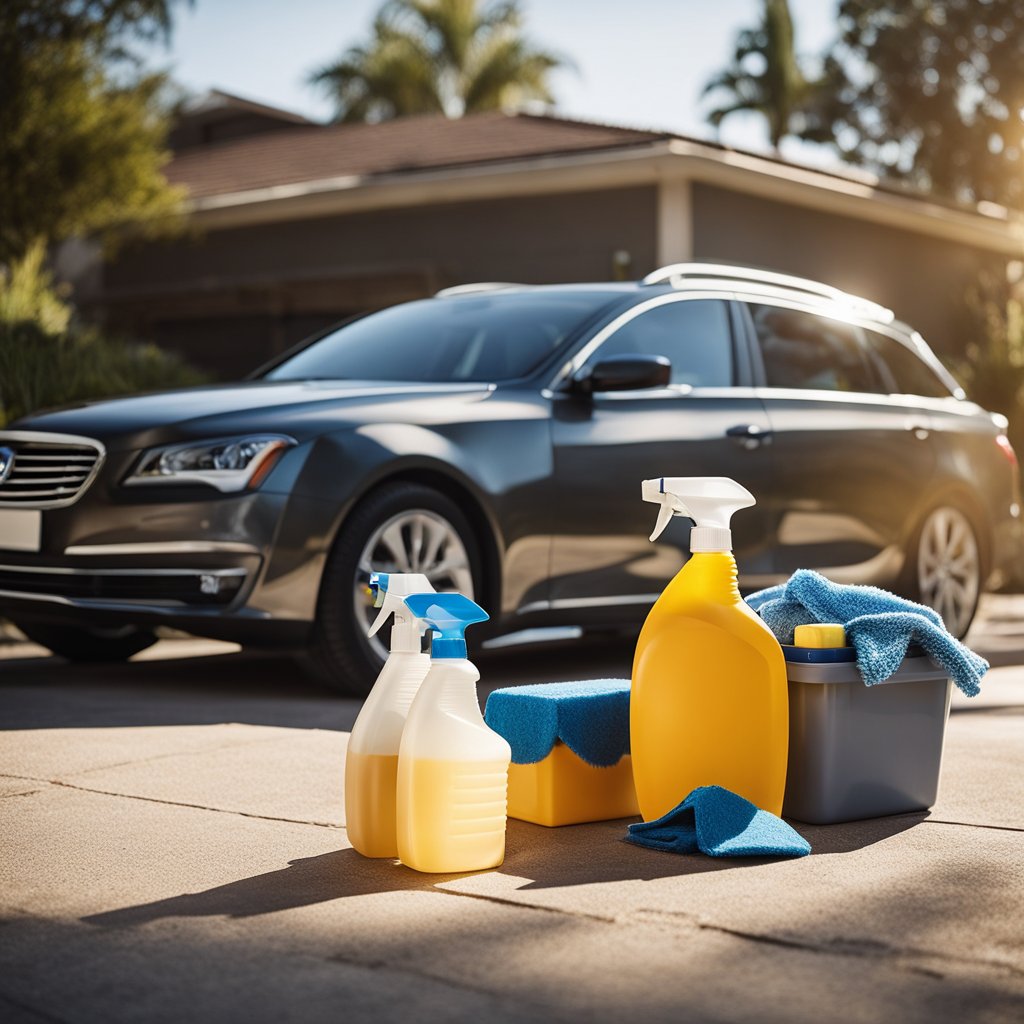What Steps Should I Follow for a Thorough Car Detailing Session at Home
Car detailing can be a daunting task, but it is necessary to keep your vehicle looking its best and maintaining its value. Many people opt to take their car to a professional detailer, but it is possible to achieve a thorough detailing session at home. With the right tools and knowledge, anyone can make their car look like it just rolled off the showroom floor.

The first step in a thorough car detailing session at home is to gather all the necessary tools and supplies. This includes a bucket, hose, microfiber towels, car soap, wax, and a variety of brushes and sponges. It is important to use high-quality products to ensure the best results and avoid damaging the car’s paint or interior.
Once all the necessary tools and supplies are gathered, it is time to begin the detailing process. This typically includes washing the car’s exterior, cleaning the wheels and tires, polishing the paint, and detailing the interior. Each step requires careful attention to detail and a thorough approach to ensure the best results. By following the right steps and using the right tools, anyone can achieve a professional-level car detailing session at home.
Setting Up Your Detailing Workspace

Gathering Necessary Supplies
Before starting the car detailing process, it is important to gather all the necessary supplies. This will save time and ensure that everything is within reach. Here are some essential supplies that you will need:
- Car wash soap
- Microfiber towels
- Detailing brushes
- Wheel cleaner
- Tire shine
- Glass cleaner
- Clay bar
- Wax or sealant
Additionally, it is recommended to wear gloves and eye protection while working with chemicals.
Preparing the Vehicle
Once all the supplies are gathered, the next step is to prepare the vehicle for detailing. Here are some steps that can be followed:
- Park the car in a shaded area to avoid direct sunlight.
- Remove any loose debris such as leaves, dirt, and rocks from the car’s exterior.
- Rinse the car with water to remove any loose dirt.
- Apply a degreaser to the wheels and tires and let it sit for a few minutes.
- Use a wheel brush to scrub the wheels and tires.
- Rinse the wheels and tires with water.
- Apply car wash soap to the car’s exterior and use a microfiber towel or wash mitt to wash the car.
- Rinse the car with water and dry it with a microfiber towel.
By following these steps, the car will be ready for the detailing process. It is important to keep the workspace organized and clean to ensure a thorough detailing session.
Exterior Cleaning

Washing the Body
The first step in thoroughly cleaning a car’s exterior is to wash the body. Start by rinsing the car with a hose to remove loose dirt and debris. Then, use a high-quality car wash soap and a soft sponge or mitt to gently wash the car from top to bottom. Be sure to rinse the sponge or mitt frequently to avoid scratching the paint.
Cleaning Wheels and Tires
After washing the body, it’s time to clean the wheels and tires. Use a wheel cleaner and a stiff-bristled brush to remove brake dust and grime from the wheels. Then, use a tire cleaner and a tire brush to clean the tires. Be sure to rinse thoroughly to remove all cleaning products.
Polishing and Waxing
The final step in a thorough car detailing session is to polish and wax the car’s exterior. Polishing helps to remove minor scratches and swirl marks, while waxing protects the paint from the elements and gives it a glossy shine. Apply the polish and wax with a soft cloth or applicator pad, working in small sections at a time. Buff off the excess with a clean microfiber towel for a flawless finish.
Remember to always follow the manufacturer’s instructions for any cleaning products used and to work in a shaded area to avoid water spots. With these steps, anyone can achieve a professional-looking car detailing session at home.
Interior Detailing

Vacuuming and Shampooing Carpets
The first step in thoroughly detailing the interior of a car is to vacuum the carpets. This will remove any loose dirt and debris that has accumulated on the floor. It is important to use a high-powered vacuum with a crevice tool to get into all the nooks and crannies. After vacuuming, it is recommended to shampoo the carpets to remove any stains or odors. There are many carpet shampoos available on the market that are specifically designed for use in cars.
Cleaning and Conditioning Seats
The seats are one of the most important parts of the car’s interior and should be given special attention during the detailing process. First, use a soft-bristled brush to remove any loose dirt or debris from the seats. Then, use a cleaner specifically designed for car seats to remove any stains or spills. After cleaning, it is recommended to condition the seats to keep the leather or fabric soft and supple. There are many conditioners available on the market that are specifically designed for use in cars.
Wiping Down Surfaces
The final step in thoroughly detailing the interior of a car is to wipe down all the surfaces. This includes the dashboard, door panels, and center console. Use a microfiber cloth and a cleaning solution specifically designed for car interiors to remove any dirt, dust, or grime. It is important to use a product that is safe for use on plastic and vinyl surfaces to avoid damage. After wiping down, it is recommended to apply a protectant to help prevent fading and cracking. There are many protectants available on the market that are specifically designed for use in cars.

